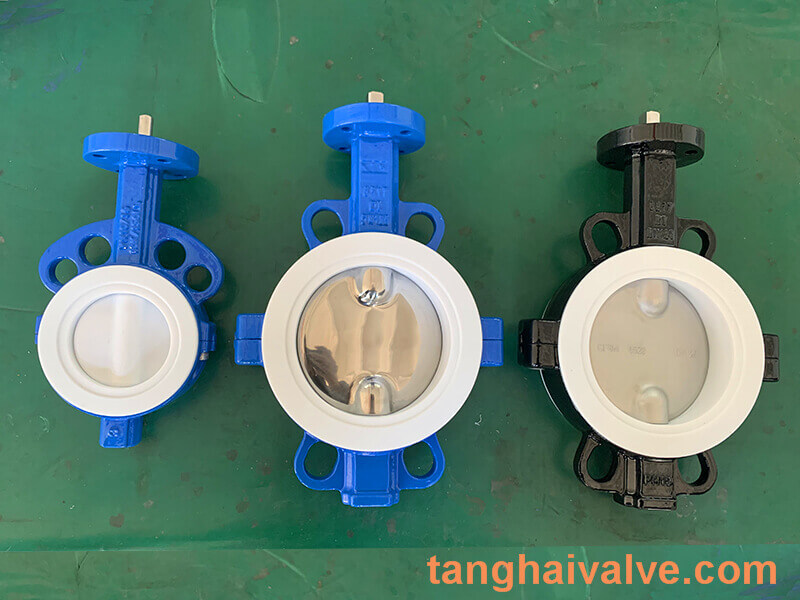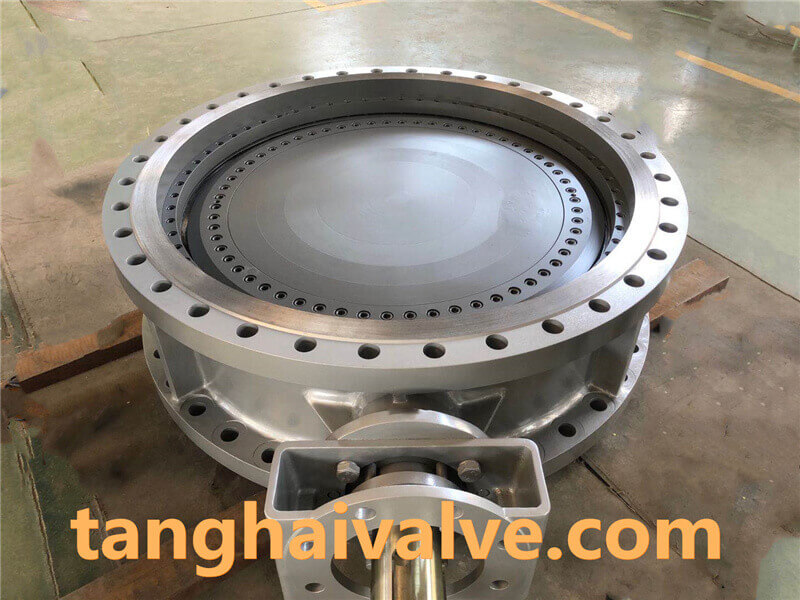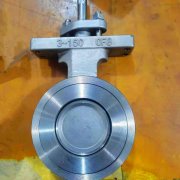The difference between fluorine-lined butterfly valve and metal butterfly valve
Butterfly valve is one of the most commonly used valves in industrial pipelines. It has a simple structure and is mainly composed of a valve body, a valve stem, a butterfly plate and a sealing ring. It is easy to operate and can be equipped with different driving devices, such as turbine devices, electric devices, and pneumatics. Equipment, etc., to adapt to more working conditions. Compared with other valves of the same caliber, the overall cost of butterfly valves can be reduced by 1.5 to 2 times, which is economical and practical. Therefore, butterfly valves are most suitable for large-diameter valves and are often used in occasions with larger calibers and flow rates.

Fluorine lined butterfly valve-PTFE-WAFER (8)
According to the sealing form of the butterfly valve, we can divide the butterfly valve into two categories: soft sealing butterfly valve and hard sealing butterfly valve. The two butterfly valves with different sealing forms play different roles in the corresponding application pipelines, and it can even be said that there are big differences. Therefore, users should understand the difference between the two types of butterfly valves when choosing butterfly valves, and choose butterfly valve products reasonably and correctly according to their own operating conditions.
Among soft seal butterfly valves and hard seal butterfly valves, our most common and commonly used ones are soft seal fluorine lined butterfly valves and metal seated butterfly valves. The difference between fluorine lined butterfly valves and metal seal butterfly valves is that fluorine lined butterfly valves are generally used for flowing media containing corrosion. In the flexible pipeline, the sealing effect is excellent, and zero leakage can be achieved. However, due to its own material limitation, this type of butterfly valve is only suitable for use in normal temperature and pressure

triple offset butterfly valve-double flange- (4)
conditions. The metal-sealed butterfly valve can be used in working conditions with relatively high temperature and pressure, and it also has certain anti-corrosion performance, but its sealing performance is poor. Specifically, the difference between fluorine-lined butterfly valve and metal sealing butterfly valve is as follows:
1. The difference in structure:
Both sides of the metal seal butterfly valve seal pair are made of metal materials. As for the fluorine-lined butterfly valve of soft sealing butterfly valve, the butterfly plate and valve seat are both wrapped with PTFE;
2. The difference in sealing performance:
The sealing material of fluorine-lined butterfly valve is tetrafluoroplastic, which has excellent sealing performance, but it is prone to aging, abrasion and short service life. The sealing performance of the metal sealing butterfly valve is relatively poor, but it is corrosion-resistant, wear-resistant and has a long service life.
3. The difference in applicable working conditions:
The fluorine-lined butterfly valve has strong corrosion resistance and can be used in corrosive media pipelines. It is only suitable for normal temperature and pressure environments. The metal sealing butterfly valve has poor sealing performance and is generally used in high temperature and high pressure environments.
4. The difference in manufacturing process:
In terms of working principle, the difference between fluorine-lined butterfly valve and metal-sealed butterfly valve is not big. The difference in manufacturing process between the two is mainly in the valve seat. The seat material of the fluorine-lined butterfly valve is non-metallic PTFE and metal-sealed butterfly valve. The valve seat is made of metal materials, and the commonly used materials are copper alloy, chromium stainless steel, stellite alloy, nickel-based alloy and so on.
TH Valve is a professional manufacturer of butterfly valve, gate valve, check valve, globe valve, knife gate valve, ball valve with API, JIS, DIN standard, used in Oil, Gas, Marine industry, Water supply and drainage, fire fighting, shipbuilding, water treatment and other systems, with Nominal Diameter of DN50 to DN1200, NBR/EPDM/VITON, Certificates & Approvals: DNV-GL, Lloyds, DNV, BV, API, ABS, CCS. Standards: EN 593, API609, API6D
Related news/knowledge:
electric fluorine-lined butterfly valve vs electric metal seated butterfly valve
Classification and selection of fluorine-lined valves
Fluorine-lined valve instructions | Installation instructions
pneumatic fluorine-lined butterfly valve vs pneumatic hard-sealed butterfly valve




 © Copyright 2020 Tianjin Tanghaidongyang Valve Co., Ltd. All Rights Reserved.
© Copyright 2020 Tianjin Tanghaidongyang Valve Co., Ltd. All Rights Reserved.